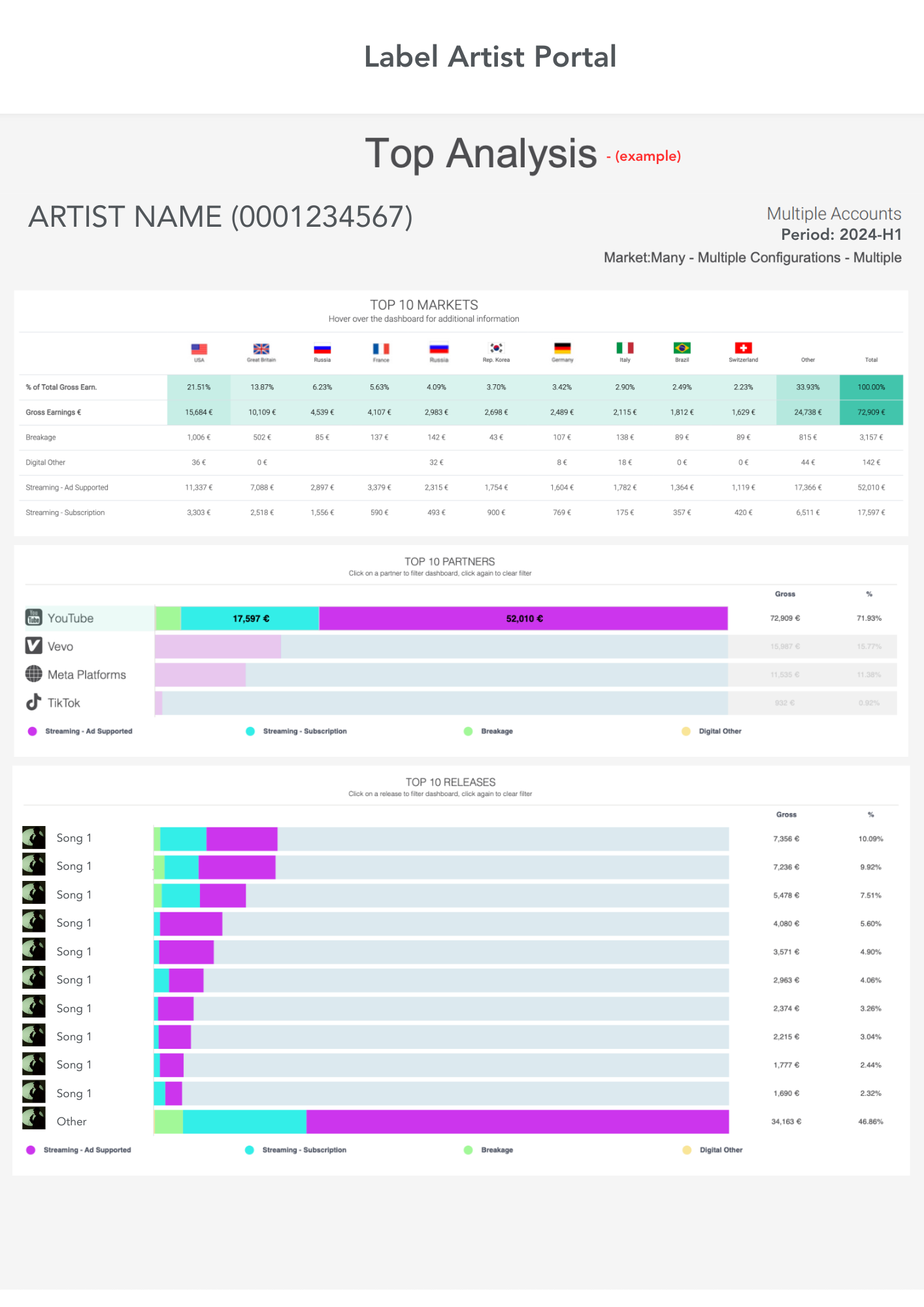Why Music Audits Make More Sense Than Ever Before
Let’s be honest:
Ten years ago, doing an audit in the music industry felt like asking to see the recipe for Coca-Cola.
Complex, intimidating, and usually met with a polite “that data’s unfortunately not available.”
Fast forward to today, and the world looks very different.
Streaming has become the dominant revenue source.
YouTube isn’t just a promo platform anymore - it’s one of the biggest income drivers for rights holders worldwide.
And the best part?
There’s data. A lot of it. More than ever.
So... what exactly is a music audit?
Quick version: It’s a structured review of whether the money artists receive actually matches the usage of their music.
That doesn’t always mean someone is doing something wrong.
But sometimes, numbers don’t add up. Especially when multiple layers - platforms, labels, distributors, publishers - are involved.
And yes, YouTube adds one more twist to that equation:
UGC, DV360, YouTube Select, Google Ads API & Ads Scripts, YouTube Audio Ads, Content ID, CPMs, Shorts, VEVO.
(If those terms sound confusing: you’re not alone.)
The real problem? Visibility.
Most artists never see the full picture.
Here’s what a typical YouTube payout might look like in a music industry statement:
“Total: €4,281.43”
(No track breakdown. No country split. No source explanation. Nothing.)
That number might look fine. But how do you know if it's right?
You don’t - unless you dig deeper.
But can you even audit YouTube?
Yes.
And that’s the point.
Because even without direct access to internal label data, it's now possible to reverse-engineer the truth.
Thanks to smarter analysis methods, industry benchmarks, and a little creative detective work, you can:
Match actual usage patterns to reported earnings
Spot red flags across platforms and territories
Understand where and how revenue might be slipping through the cracks
Compare actual view counts to reported revenues
Separate Shorts from longform
Estimate CPM ranges across devices, usage and regions
Understand how much money your music generated - even if it came from fan-uploaded content (UGC)
That’s not speculation. It’s math.
And math doesn’t lie.
Why now?
Because today’s industry runs on platforms like YouTube, TikTok and Instagram - where content is remixed, reused, embedded, claimed... and monetized.
Every use creates a micro-transaction.
But unless you're tracking those signals, money can fall through the cracks.
Add to that the fact that some payouts aren’t made per track, but via so-called "label pools" (a collective earnings pot distributed proportionally across the whole roster)... and you can guess who loses in that system:
Yep - the ones whose music actually performs well.
Most royalty statements don’t tell the full story.
They list earnings by provider (“YouTube”, “VEVO”, sometimes even “Google Play”), add a few technical columns like “Pay Units” or “Channel Group” - and that’s it. No actual view counts. No CPMs. No track-level splits. No country data.
To the untrained eye, it might look detailed. But for anyone who’s ever seen a YouTube dashboard up close, these reports leave one big question unanswered: Where’s the real data?
And that’s where modern audit companies - like us - and methods step in. With the right reference points, even vague statements start to make sense - or raise the right red flags.
Screenshot example based on a typical artist portal layout. This is a fictional example for illustrative purposes only.
Okay, but what can an audit actually do?
Done right, an automated audit software can uncover things like:
Unclaimed UGC revenue
Underreported views
Country-based mismatches
Improper Content ID assignments
Hidden income from secondary platforms (via VEVO or aggregators)
And here's the interesting bit:
Even without formal data from a label, you can estimate and argue discrepancies based on external signals.
Think of it like this:
If YouTube says a video with your song got 80 million monetized views - and the reported income is €472…,..
…you don’t need a law degree to know something’s off.
Isn’t this super technical?
It used to be.
But tools - like our RevShaker - are changing the industry.
The ability to run detailed, data-driven audits is no longer limited to forensic accountants or major publishers.
RevShaker even allows daily monitoring of subscriber growth, views, regional stats - and overlay them with monetization logic.
(We've seen some pretty crazy cases where artists had 9-digit YouTube numbers... and only 5-digit earnings.)
The takeaway?
Audits used to be complicated, expensive, and confrontational.
Today, they’re faster, automated, data-driven, and - in some cases - surprisingly eye-opening.
If you’re an artist, a manager, an accountant, or a publisher working with meaningful YouTube traction:
Understanding your real income isn’t a luxury. It’s a necessity.
And if all of this sounds a little too familiar…
Let’s just say: you’re not the only one asking these questions.


